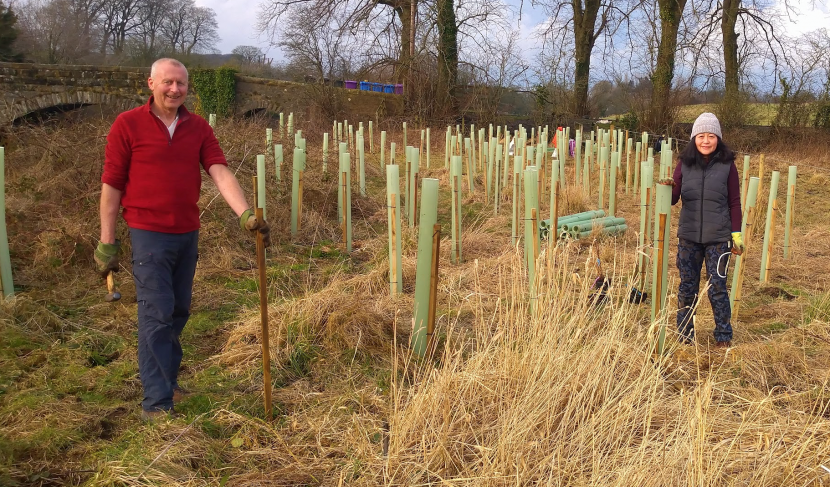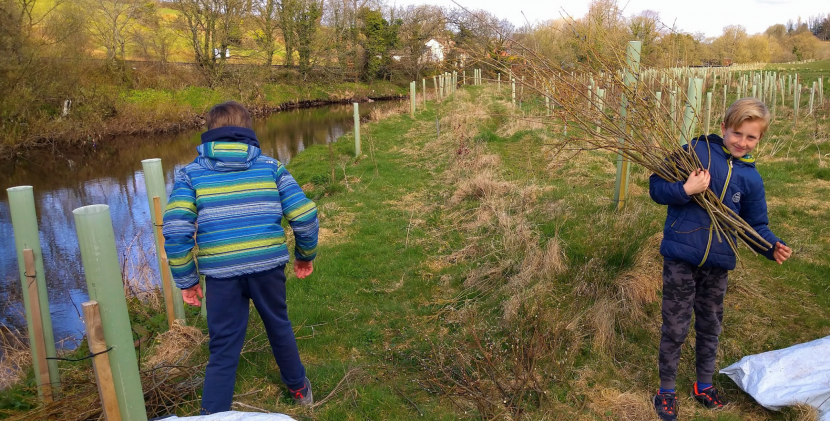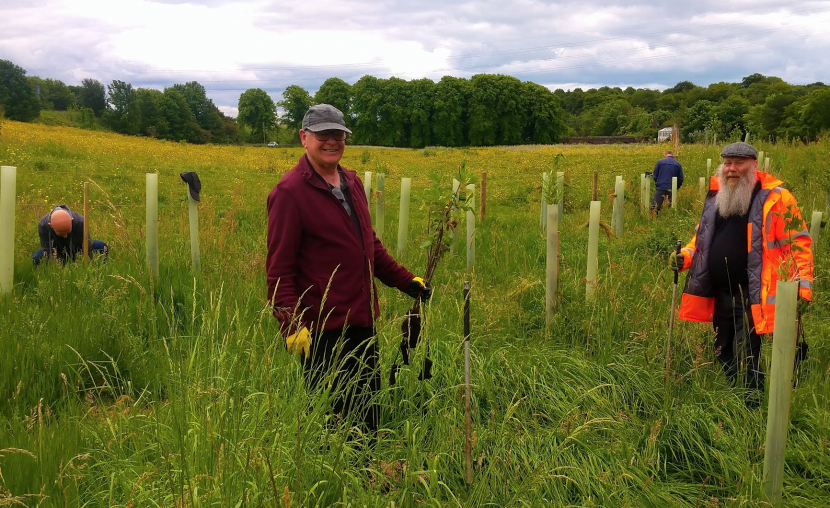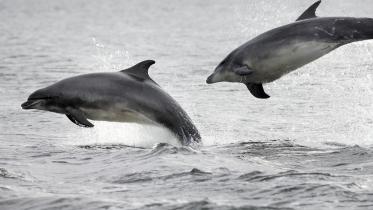
Green Infrastructure Project Update - A natural progression
To spend time talking with Peter Livingstone is an uplifting experience. His enthusiasm for trees, planting and habitat creation is infectious. A passionate and highly-knowledgeable member of the team at the Eadha Enterprises, this specialist tree nursery has been a key component in the Garnock Connections project.
Peter’s interest is in the Growing for Garnock slice of the large and ambitious Garnock Connections pie. His commitment goes well beyond trees. Diversity and inclusion lie at the heart of his method. He recognises that people are crucial to the success of his project and enthusiastically works with a range of groups and volunteers, all the while embracing a widening range of habitat creation goals that includes wildflowers and shrubs as well as trees.

“Eadha Enterprises is a small environmental charity based in Lochwinnoch and we are delighted to be delivering the Growing for Garnock element of Garnock Connections”, he explained. “Whilst on the surface we appear to be all about trees, planting and habitat creation, the needs of the project have really helped us diversify what we are doing and taken us into wildflowers and native plants. We have also been working with a whole range of people, from volunteers and groups through to inspirational individuals. Together we have been going out surveying and collecting seed and bringing it on in our small nursey in Renfrewshire. The end product is that we then plant and sow in various sites through the Garnock Valley.”
As well as harnessing the enthusiasm of local communities in seed gathering and planting, Peter encourages his team to work with local primary schools and youth groups. That’s a crucial step if a legacy of pride and stewardship is to be left when the project reaches its conclusion.

Habitat improvement has seen the creation of a nature network through either restoration or new planting.
Peter takes up the story. “One of the key projects we support is the Groatholm Riparian Woodland project which is an extension of our involvement with the Growing for Garnock Project. Having been very fortunate to receive funding from the Green Infrastructure Community Engagement Fund inspired us to do even more. The funding is vital as it has helped us deliver a good half a kilometre of woodland creation along the banks of the Garnock, which in scale alone is quite an exciting project for us. But it has also expanded our vision.”
The importance of funding can’t be overestimated. It’s one thing to have the expertise and the seed bank, but the practicalities of buying in additional trees, covering fencing costs, and securing enough guards to fend of browsing animals quickly tots up.

Peter acknowledges that the project can be comfortably viewed as a long-term environmental investment. “We planted a couple of thousand native species, all kinds of riparian loving woodland trees, including our own aspen which is a speciality of our nursery and a relatively rare woodland species. We expect to see the benefits of trees over the course of time, stablishing the bank, preventing erosion, and improving fish life quality by establishing shade and canopy cover which also draws in food for the fish. There are a whole range of benefits for nature and let’s not forget that planting on this scale creates a nice riverside walkway”
Aspen is indeed a speciality tree for Peter’s team. Eadha Enterprises actually takes its very name from Aspen, Eadha being the Gaelic word for the species. Synonymous with leaves which tremble, shimmer and shiver in even a slight breeze, it is ideally suited to the Garnock project as it prefers well-drained soil near rivers. And Aspen is a biodiversity superstar, its leaves attract a wide variety of insects, including the aspen hoverfly, and a host of birds feed on the insects attracted to the tree. Woodpeckers go a step further and seek out cavities for nesting. It is even said to be one of the most popular trees for beavers.
No one could accuse Growing for Garnock of being anything other than highly active. An impressive list of achievements includes 124 people trained in planting and propagation, 2873 wild plants planted as well as the creation of the aforementioned access route.
Success breeds success. “Our planting regime has been really successful’, explains Peter, “so we have gone back in and planted more species to further enhance the diversity of the site and we look forward to hopefully seeing it flourish in the coming years. I’d encourage anyone passing on the A737 to glance over at what we have done.”
If they do, they will see a remarkable sight. Helping to set up Eadha Enterprises has allowed Peter to expand what had been a hobby propagating cuttings from local aspen trees and promoting local conservation projects into a valuable environmental social enterprise. It isn’t just the aspen that shimmers in this region.

NOTES
The Green Infrastructure Fund Is part of the Scottish Government’s current European Regional Development Fund (ERDF) programme, which runs through to 2023. This is one of two ERDF Strategic Interventions led by NatureScot – the other is the Natural & Cultural Heritage Fund .
You can follow the European Structural Funds blog for ESF activities, news and updates. For twitter updates go to @scotgovESIF or use the hashtags #ERDF and #europeanstructuralfunds



